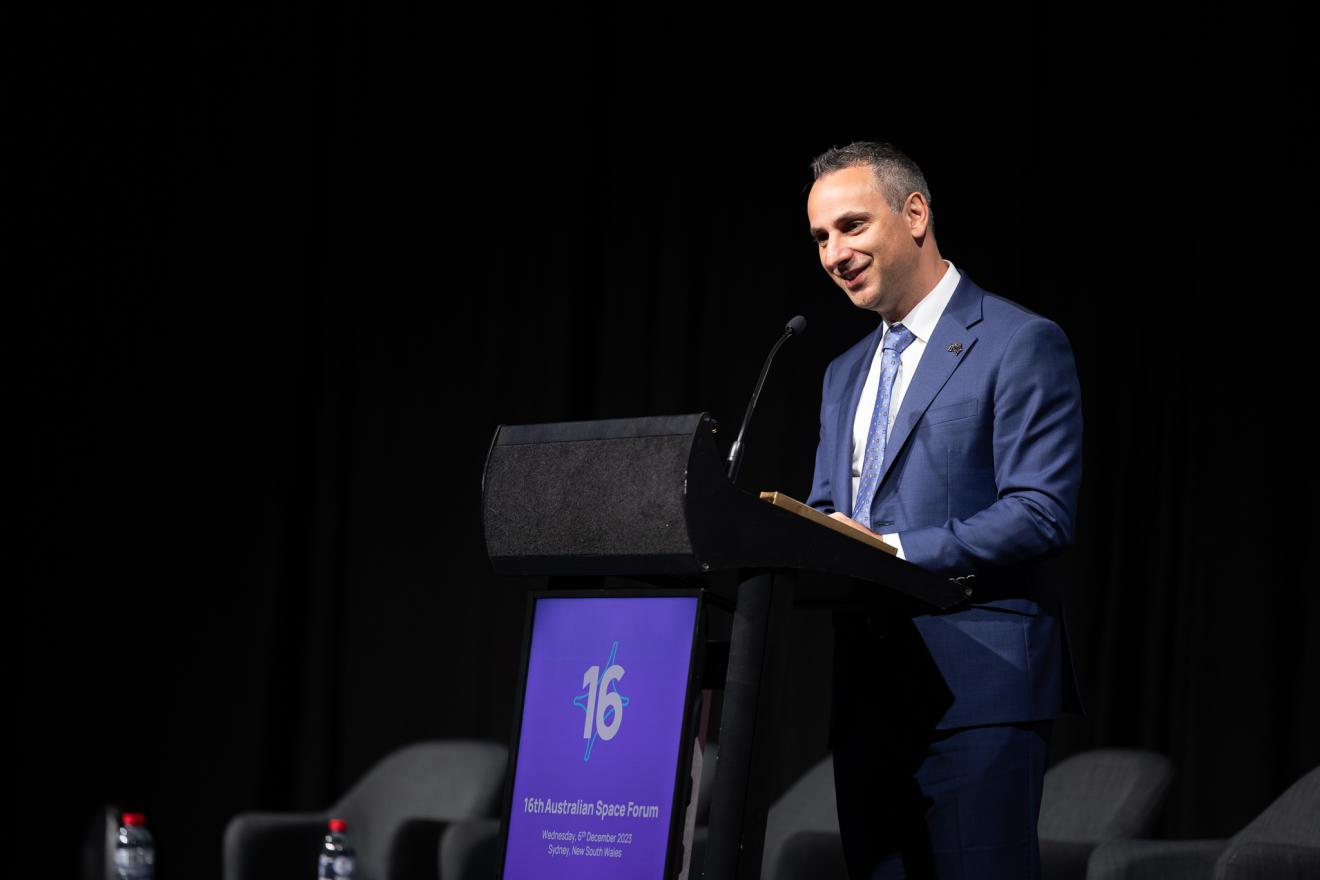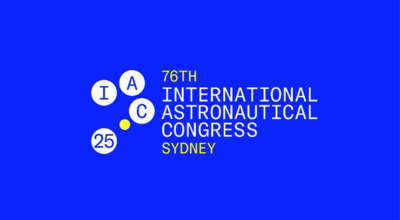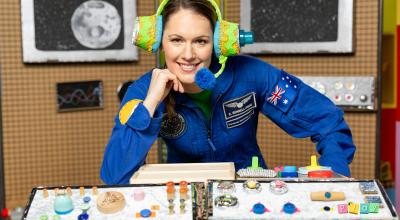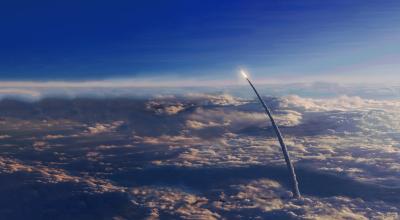Introduction
*** check against delivery ***
Good morning, everyone.
It’s a pleasure to be here today for the 16th Australian Space Forum.
I’d like to start by acknowledging the traditional owners of the land on which we meet today, the Gadigal people, and I pay my respects to their elders past and present.
At the Australian Space Agency, we proudly acknowledge the enduring scientific connection to space of Australia’s First Nations people – the world’s oldest astronomers through our brand and identity.
I’d like to commend the Andy Thomas Space Foundation team on another successful Space Forum – the first time outside of its home state – and for all the work and investments they make to inspire and educate the next generation.
We are fortunate to have some very distinguished guests here today, and I won’t run through all of them again, however I would like to give recognition to the significant UK presence.
We are joined by Her Excellency Vicky Treadell CMG, MVO, British High Commissioner to Australia. Her Excellency has been a fervent supporter of the bilateral UK-Australia opportunity in space, something I witnessed in my early days as Head of the Agency when the space bridge agreement was signed. Thank you for the High Commission’s generous sponsorship of today’s forum.
It’s of great excitement that we also have the head of the UK Space Agency Dr Paul Bate here with others members of the UKSA and a UK trade delegation.
Paul, the UK Space Agency under your leadership has delivered impressive results and we look forward to hearing from you through the day about the journey you have been on. Thank you for the spirit of collaboration and energy you bring to the partnership. A warm Aussie welcome to you and your colleagues.
We also have representatives from the New Zealand Space Agency, JAXA, ISRO, NASA and KARI, continuing the international flair that the Australian Space Forum is increasingly known for.
Rover Name and Program
Now let me start with the news many of you will have seen this morning.
Today, we introduced the world to “Roo-ver”.
From nearly 20,000 votes, Australia has made its decision. Roo-ver is the name of our history-making rover that will go to the Moon.
Roo-ver does everything we wanted the name to do, as all four finalist names did. It’s uniquely Australian, it reflects the Aussie spirit, and the excitement of this occasion.
Now this campaign was much more than just a competition – … it was fundamentally about connection.
Our journey to the Moon is our boldest adventure yet. It’s a journey we can’t embark on alone as a sector, it’s one we need go on together as a nation.
This competition was about strengthening our connection with the Australian community – to not only have Australia feel a bigger part of this historic mission, but to garner more recognition about the criticality of space to our way of living. It has reached into many classrooms around the nation.
The mission is as much about the journey as the destination … our nation is gaining significant expertise and new technical skills from developing this rover for the harsh environment of space – that we can bring back to improve industries here on Earth.
Investing in science and technology lifts our whole nation … it makes our economy stronger, it lifts our standing on the global stage, it keeps our brightest talent here – and we are seeing that in both consortia in Phase 1.
The Australian Government is committed to strengthening Australia’s robotics capability – and this mission is one of the most advanced robotics projects happening in our country right now.
It’s also a reflection of the Agency and Australia’s enduring partnership with NASA and we are thrilled to have astronaut Dr. Shannon Walker with us today.
This project came about from the Australian Space Agency working extensively with NASA to identify how our nation’s expertise in remote operations could enhance the efforts of the generation-defining, global Artemis program.
And NASA is generously providing the ride to the moon, showing the value NASA places on Australia – and what our ecosystem has to offer.
International Partnerships
The Australian Space Agency continues to take its role as the front door for the world to engage with Australia in space very seriously – forging deals and generating opportunities through our convening power and space expertise.
The signing of a Technology Safeguards Agreement with the United States as part of the Prime Minister’s US state visit a few weeks ago is a great example.
The Australian Space Agency led this whole of government effort to develop the TSA in accordance with Australia’s treaty making process.
We know Australia has unfair, natural advantages to offer the world when it comes to launch.
This agreement will capitalise on those advantages and further strengthen our long and meaningful partnership with the United States in space.
As US demand for launch increases, and with domestic options at capacity, this can help drive investment in Australian infrastructure and the scaling of Australia’s launch sector, making Australia more attractive as a global launch hub – supporting growth across our entire supply chain.
I’m incredibly proud of the work that’s been done by our team and our partners across government to make this happen.
The Agency has ensured that throughout 2023 our relationships with key space nations have remained strong. In less than 12 months the Space Agency heads from the US, Japan and now the UK have visited Australia.
As I said earlier, we are delighted to have our UK counterparts here in Sydney. And while our respective sectors are starting to reap rewards from the UK-Australia Space Bridge, it is fantastic to see many Australian and UK organisations partnering together in Phase One of the UK Space Agency’s International Bilateral Fund – bringing new services to the market and supporting cutting edge collaborative research projects.
The UK delegation visit is a terrific opportunity for us to show the UK what we have to offer as a space sector, and to identify new business opportunities and markets – it’s also a tremendous opportunity for us to learn from the UK with Paul generously agreeing to speak today.
Paul being here – and the visits of the NASA and JAXA leadership all in the same year, show that the world cares about and is watching the work we’re doing here in Australia in space – a critical signal of confidence in all that you do, and for investors in the room, a firm signal of the opportunity at hand.
Five years of the Agency
This is the first Space Forum since we marked the five-year anniversary of the Australian Space Agency.
Our enhanced international partnerships are just one example of the marked changes we have seen – the contrast pre- and post- space agency is dramatic.
The milestone offered an opportunity to reflect on the growth we have seen which serves as a springboard for our future. Working together since 2018:
- There are 17,000 people now employed in our sector, up from 10,000 before the Agency began.
- Australians are coming home to work in our space sector in jobs that simply weren’t here in the past.
- We are one of only a handful of nations to have activated a commercial space launch act, returning to being a nation that launches things to space, after a hiatus of half a century. And we are working to establish the right regulatory conditions to enable entrepreneurship across the sector, while ensuring we remain a safe and responsible space nation.
- Our programs and investments by the Australian Government have created jobs, driven investments in our regions, opened up international supply chains, enabled science, and helped drive millions of dollars of private investment.
- We have enabled industry access to a national payload qualification network, a publicly accessible mission control, new space tracking and communication facilities, and a space data analysis facility. We have a world first centre that operates complex missions from the deep sea to deep space.
- We have identified market opportunities, development pathways and the niches we can exploit.
- And we have boosted Australian capabilities across the full breadth of the national space industry, with the backing of over 60 projects to make us a more competitive space nation – with enabling capabilities such as AI, quantum, robotics and advanced manufacturing – priorities for the Government – featuring prominently, helping increase Australia’s economy complexity.
- And we have, and will continue to, use our influential platform to tell the story of why space matters – to better connect with Australia and increase understanding of why space technologies and services are critical to our way of life and in addressing some of our greatest challenges.
- And we have worked to foster a more diverse STEM and space workforce through initiatives like the National Indigenous Space Academy, Kids in Space program, and through astronaut-in-training Katherine Bennell-Pegg, as an ambassador for young Australian women looking to enter STEM careers.
And we see that sustained growth reflected in some of the important milestones achieved in 2023, naming only a small few:
- The largest Australian-made payload launched into space.
- Millions of dollars in private capital raises.
- New manufacturing facilities with cross-cutting capabilities opened.
- Dozens of deals struck between Australian companies and their global counterparts across almost every element of the space ecosystem.
And on Saturday, we watched with pride as the Australian-made SpIRIT nanosatellite was launched into space.
Congratulations to the University of Melbourne, Inovor Technologies, Neumann Space, Nova Systems and SITAEL Australia.
The Australian Government is proud to have supported this mission with nearly $7 million in investment and technical advice from the Agency.
SpIRIT is a mission that demonstrates cutting-edge satellite technologies Australia can offer the global space market.
It’s the first time an Australian-made satellite hosts a foreign space agency’s scientific payload, with the Italian Space Agency’s HERMES experiment onboard.
We wish the consortium the best for the commissioning phase, noting that successes were achieved even before SpIRIT left the ground – as the process of taking the satellite through its full development cycle resulted in many important advances for the industry partners.
2024 Outlook
We should use these wins to enter 2024 with confidence.
We need to use this strength and confidence to unleash our potential.
And this begins with a more unified, national mindset.
The criticality of space to our national interests presents an opportunity to advance and grow our civil space industry.
As former Defence Minister Hon. Kim Beazley AC said recently:
“the space domain is integral to ensuring Australia’s national interests are advanced and protected. Government, industry and researchers must continue to work in concert so that our future as a nation is written not just on Earth, but in the skies above.”
The Australian Space Agency leverages its leadership and coordination role to identify where the use of space can support broader national goals.
We’re working closely with our partner agencies across government to help identify and shape their space capability needs.
In terms of partners, this is a good moment to pause and acknowledge Air Vice Marshall Catherine Roberts, AO, CSC. It has been an honour to work alongside AVM Roberts as the inaugural head of Defence Space Command and as a member of the Australian Space Agency’s Advisory Board.
Through her leadership, we have made significant ground ensuring appropriate alignment and collaboration on space efforts in Australia. Although Cath isn’t here today – she is in Germany and reports a fantastic visit to the ESA Astronaut Training Centre to see our own Katherine Bennell-Pegg yesterday – I do thank and wish Cath the best.
I look forward to continuing that productive and positive relationship with Defence alongside Chief of Joint Capabilities, Lieutenant General John Frewen AO DSC and Cath’s successor Major General Greg Novak who assumes leadership of Defence Space Command this month.
While this critical alignment work continues across government, we have much more to look forward to in the year ahead:
-
- The successful Moon to Mars Supply Chain Capability program continues.
- Today we announced support for two projects led by VXB Aerospace and Extraterrestrial Power.
- Further examples of how Australian companies are contributing to global space missions by being agile and disrupting the status quo with innovations that are inventive and cost-effective, and that can help address some of our greatest challenges like climate change.
- More results from the Australian Government’s $40 million Demonstrator Mission Grants program will emerge, again emphasising how Australia is contributing to the Artemis program for the benefit of our nation.
- Australia and India will become closer commercial partners in space as the Government announces the recipients of our International Space Investments Initiative India Projects grants program.
- Our industry will also have access to significant funding opportunities through the Australian Government’s landmark $15 billion dollar National Reconstruction Fund and $392 million dollar Industry Growth Program.
- In the next six to nine months Australia’s space heritage will increase significantly with a large number of organisations and institutions sending their technology to space for the first time – critical, as space heritage, is an essential enabler for to securing contracts and business.
- And planning for the International Astronautical Congress in 2025 leaves the launch pad as we prepare to welcome the global space community to this very venue in about 21 months. The countdown is on! With APRSAF in Perth next year an important precursor event.
- The successful Moon to Mars Supply Chain Capability program continues.
Conclusion
In wrap up, I wish everyone a fantastic 16th Australian Space Forum, with my thanks to the organisers, sponsors and speakers for their valuable contributions.
I again thank our UK delegation for joining us in force. Please give them and our other international guests a warm welcome. And make sure you engage in discussions to identify yet new partnerships as space is an international and team sport.
Australia’s space ecosystem has come a long way in five years – something to be proud of – congratulations on what you’ve achieved this year alone.
I look forward to next year.
Thank you.










